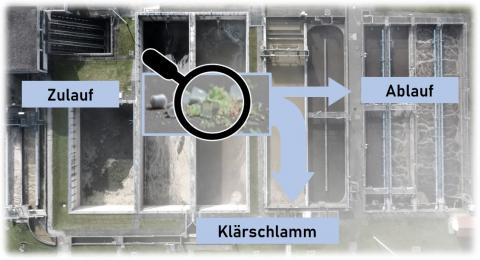Factsheet 11: Microplastics in wastewater treatment - Development of sampling and analysis methods for detection of input quantities into surface waters
Factsheet 11: Microplastics in wastewater treatment - Development of sampling and analysis methods for detection of input quantities into surface waters
It is not easy to determine how much microplastic is contained in wastewater and sewage sludge. In addition to plastic, countless other particles and substances are present. To reliably determine the concentration of microplastic particles, complex procedures for sampling as well as for removal of foreign substances and analysis of the microplastic particles are required.
The PLASTRAT research team has set itself the task of developing methods for these procedures and thus advancing the detection of inputs to surface waters. In this context, they provide important insights into the relevance of wastewater treatment plants as a retention option for plastic particles.
The project focuses on the quantification and technical reduction potential of plastic emissions in the field of urban water management, including sewage sludge treatment. The results on method development have been summarized in the 11th fact sheet of the research focus. The fact sheet is available for PDF download here.
Wick, Natalie; Krause, Steffen; Schaum, Christian; Fischer, Franziska; Fischer, Dieter; Klaeger, Franziska; Ivar do Sul, Juliana; Labrenz, Matthias (2020): Microplastics in wastewater treatment: Development of sampling and analysis methods for detection of input quantities into surface waters. Fact sheet 11 of the BMBF research focus „Plastics in the Environment“.

